
Types of packaging: The most important terms relating to packaging
The following magazine article deals with the term ‘packaging’. It also looks at the other terms relating to packaging. Packaging is not only an important component for protecting your goods, but also offers an excellent opportunity to present a brand. We also present the most popular packaging materials and their functions.

Definition: Packaging
"The entirety of packaging materials and packaging aids that serve to protect the packaged goods, people and the environment, to ensure rationalisation during handling in production, in the distribution of goods, in the presentation and consumption of the packaged goods and to inform [sic] about and advertise the packaged goods. The function to be performed by the packaging can therefore be assigned to the areas of protective function, rationalisation function and communication function."
In simple terms, this means Packaging is used to store and protect your goods. However, it also serves a communicative function, for example in the presentation of goods.
In everyday language, a more precise explanation of the term ‘packaging’ is not normally necessary. However, when it comes to a technical discussion, the common definitions and exact terminology of the term must be clarified.
packaging types and areas of application
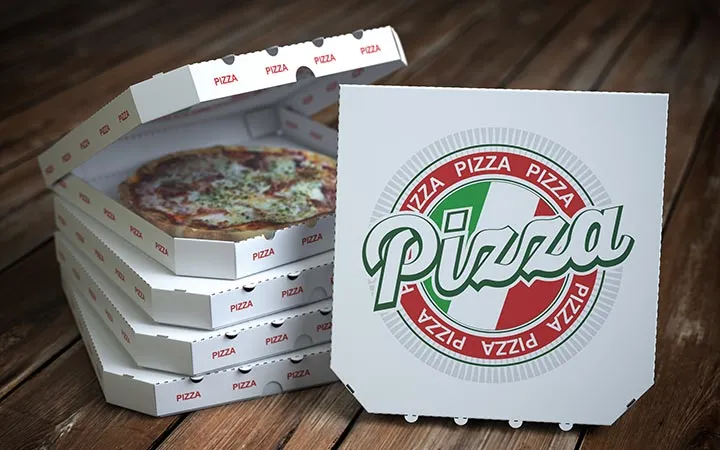
- Sales packaging is a sales unit that consists of goods and packaging and is intended for the end consumer. However, it can also be printed packaging such as folding boxes that are filled by the final operator. In this case, it is either service packaging (enables or supports the transfer of goods) or Cardboard shipping boxes (enables or supports the dispatch of goods).
- Outer packaging contains a certain number of sales packaging units. They are either offered together with these sales units or are used to fill the sales shelves.
- Transport packaging ensures that goods are not damaged during transport and handling. Such packaging does not usually reach the end consumer.
- Service packaging is used at the point of sale to pack the goods directly. This includes pizza boxes, bread roll bags and pharmacy tins.
- Packaging for hazardous substances (pesticides for users, respiratory-sensitising mixtures, liquid fuels, etc.) have special take-back obligations. Transport may also only be carried out by disposal companies that can provide evidence of the relevant licences.
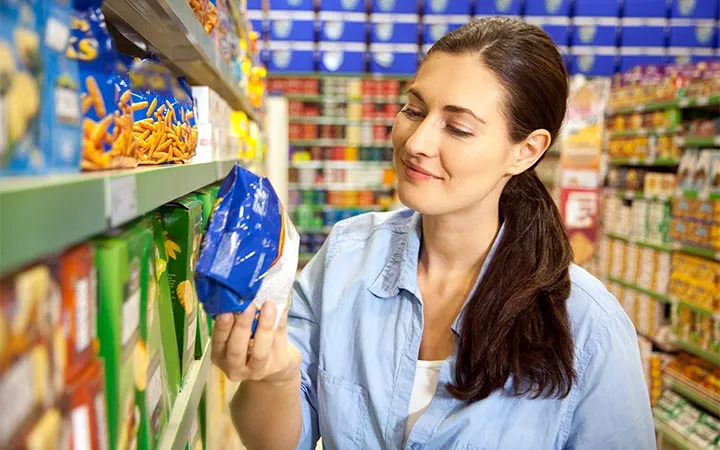
other packaging types
- Beverage packaging
- Reusable and disposable packaging
- Single-use plastic packaging
- Single-use plastic food packaging
- Single-use plastic drinks bottles
- Laminated packaging
- Emptied packaging
Do you have questions about our folding boxes?
I will be glad to help you personally.
Explanation of packaging terms
In addition to the term packaging, there are many other terms for types of packaging that are used in the packaging sector. These are the following terms:
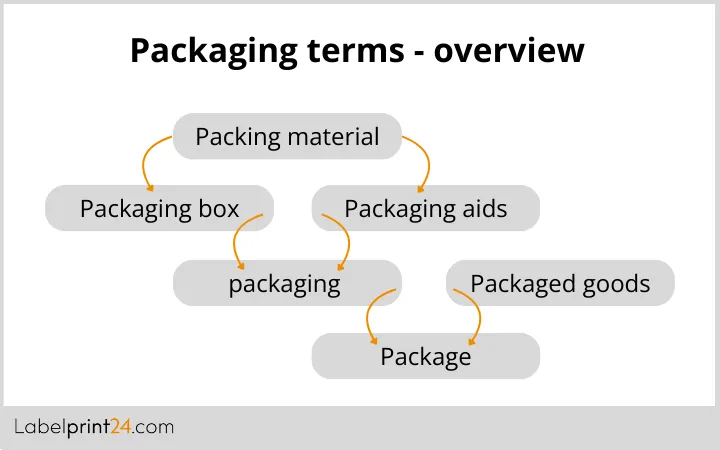
- Packaged goods: the goods/product to be packaged
- Packaging material: Material from which the packaging material is made
- Packaging box: Container in which the goods are packed, e.g. crate, carton, box
- Packaging aids: Components that ensure the cohesion of the packaging materials (adhesive tape, filling agents, blanks)
- Packaging: Are the common packaging material and packaging aids
- Packaging (unpacking): Bringing together the goods to be packaged with the packaging
- Package: sum of packaged goods and packaging material
Pack and packaging
The terms ‘pack’ and ‘packaging’ are usually used interchangeably, but there is an important difference.
The pack is the combination of product (packaged goods) and packaging. To illustrate this, an example is given here. The product is a litre of milk. The unpackaged milk is called packaged goods or, alternatively, filled goods. This includes all products that require packaging for protection. In order for the milk to be sold, it must be transported in a container. The container is, for example, a carton box or a glass bottle. The litre of milk and the carton box together form the package, whereas the carton box without milk is only the packaging.
Packaged goods + packaging = pack
Packaging material and packaging
There is also frequent confusion between the terms packaging material and packaging. A packaging material is the material from which the packaging (packaging and packaging aids) is made. This includes, for example, paper, plastic, wood, metal, textiles or glass.
A packaging, on the other hand, is the finished container used to pack goods, such as a folding box, a glass bottle or a shipping carton.
To illustrate the difference: A pizza box with a pizza inside. The pizza box is made of cardboard - cardboard is the packaging material in this case. However, the finished pizza box is the packaging.
Packagings are also often supplemented by packaging aids to fulfil all the desired and required packaging functions. They help with sealing, labelling, cushioning, opening, handling or generally protecting the contents of the packaging. Packaging aids include nails, adhesive tape, staples and strapping.
Overall, both packaging materials and packaging play an important role in the safe storage and transport of products. It is crucial that they are carefully selected to preserve the quality of the contents and ensure that no damage occurs.
Packing and sealing
Packaging and sealing products are two different processes. Nevertheless, the terms are used synonymously. Packaging covers a wide range of activities, including erecting, wrapping, film wrapping and filling packaging. Closing, on the other hand, involves sealing the packaging.
- Packaging refers to the process of wrapping a product in a protective cover or packaging material such as cardboard, glass or film. Packaging is an important part of goods logistics and is used to properly stow the product for transport.
- Sealing, on the other hand, is the final process in packaging. The packaging material is sealed airtight and watertight using a packaging aid such as adhesive tape, zip fasteners, clamps or other sealing mechanisms.
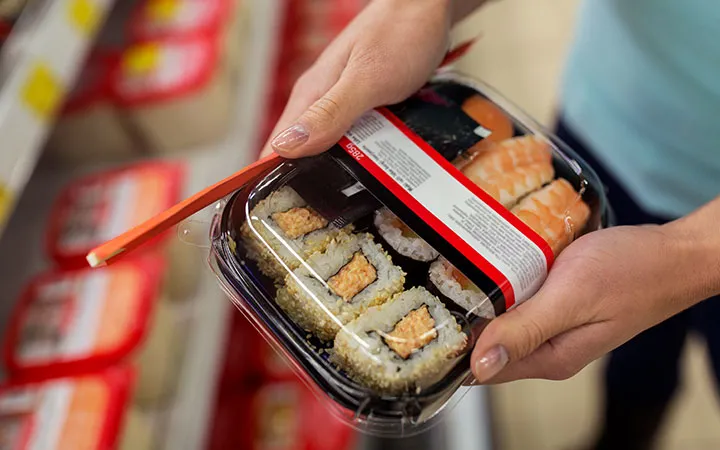
When purchasing packaging and packaging aids, care should be taken to ensure that they are suitable for both packaging and sealing. This is the only way to ensure safe storage and transport of the products.
What packaging stages are there?
In the packaging industry, a distinction is made between different packaging stages. They are categorised into primary, secondary and tertiary packaging. These packaging stages have the following tasks:

Primary packaging
The main packaging has direct contact with the product and is referred to as primary packaging. This includes, for example, cans, films, jars, tubes and bags. The primary packaging therefore surrounds the actual product.
Secondary packaging
IIn second place comes secondary packaging, which has no direct contact with the product and serves as outer packaging or sales packaging for primary packaging. It provides the primary packaging with additional protection and is essential for shipping, transport and marketing.


Tertiary packaging
Tertiary packaging is the last to be used. It comes in third place and is rarely seen by the consumer. This usually refers to containers or pallets that combine several small packages into one unit. They are important for transport safety and logistics.
Which packaging is especially popular?
There are many types of packaging, but which ones are particularly popular? Packaging should appeal to buyers visually, haptically and informatively. Customised packaging is becoming increasingly popular and is also beneficial for the environment. Custom-made carton is tailored exactly to the product, but still offers optimum protection. Not only is material saved, but shipping costs are also reduced due to less weight. The following packaging in particular achieves this:
Folding boxes
Folding cartons are stable and flexible packaging. They convey a high-quality impression and also impress at the point of sale. Folding cartons are one of the cornerstones of e-commerce boxes. The boxes are used in many industries as they can be flexibly customised to the product. In addition, different materials can be used for folding boxes depending on the application. Folding cartons are mainly made from cardboard, solid board or corrugated board - the choice of material depends on the application of the carton.
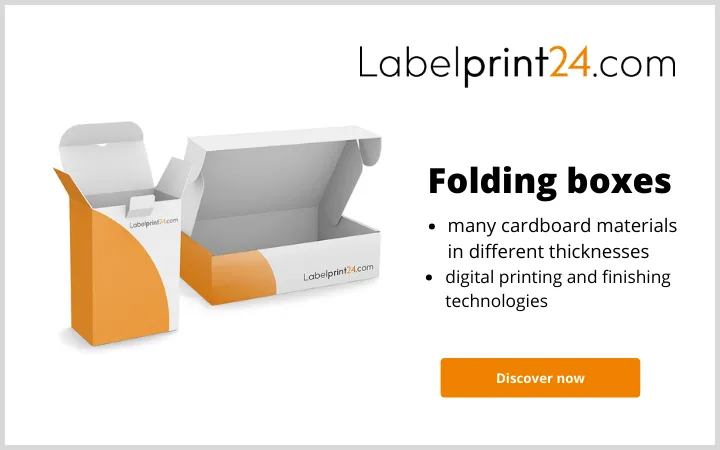
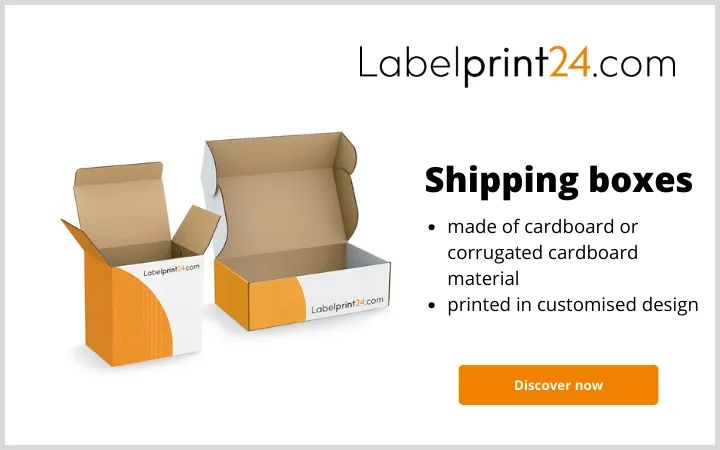
Shipping cartons
Shipping cartons are used to protect products or primary packaging during transport and to create order in the warehouse. Shipping boxes offer protection against dirt, moisture, knocks and scratches. The boxes can be made of different materials such as corrugated cardboard, plastic, wood or metal. Corrugated cardboard is a particularly popular material - the cardboard is available in different thicknesses depending on the application. Corrugated cardboard can also be recycled and reused after use. The packaging makes a first impression on the recipient - it is therefore possible to customise the cardboard extensively; with your own dimensions, design or finishing.
Laminated tubes
Laminate tubes are a further development of tube packaging for pasty or semi-liquid products. The tube consists of several substrate layers, a tube body, the tube shoulder, the tube thread and the tube closure. Optionally, a tube seal can be attached as a tamper-evident closure. Its main task is to securely reseal the contents. In addition, the tube allows the product to be dispensed with pinpoint accuracy and in precise doses, thus reducing the contact of the product with the environment and extending the shelf life of the contents. The tube surface is mainly used as an information medium, but also as an advertising medium. Tubes are particularly popular in the cosmetics and pharmaceutical industries; around 20% of the tubes produced in Germany are used as toothpaste tubes.
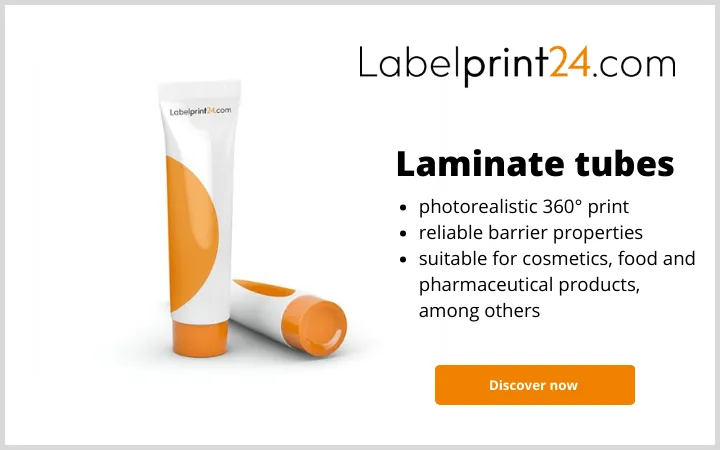
Eco-friendly packaging
Environmentally friendly and sustainable - both aspects are becoming increasingly relevant for consumers with regard to climate change. The packaging industry in particular needs to rethink its approach in order to create ecologically sustainable packaging and types of packaging. Nevertheless, we cannot be without packaging - it transports and protects our goods. But how can the (packaging) problem be solved? In recent years, increasingly efficient materials and additives have been developed, and energy and manufacturing processes have also improved. Nevertheless, we still recycle too little or incorrectly. In addition to improving materials, other target-oriented aspects must also be taken into account:
- Unnecessary disposable packaging - regardless of the material - should be avoided
- Redesign of products (refill options)
- Avoid unnecessarily large packaging
- Recycling capability
To avoid unnecessary packaging material, for example, it is important to produce customised packaging. Standard packaging rarely fits or ends up being far too large, resulting in the use of additional filling material. Larger material requirements lead to increased, unnecessary resource utilisation and greater waste production. It also generates unnecessary costs. Customised packaging is therefore better.
If packaging cannot be avoided, reusable packaging or refill systems are of great relevance - especially in retail, to-go and mail order. This packaging is used multiple times and for as long as possible. This means that the packaging does not immediately become waste after use. If they do have to be disposed of after a certain period of time, they should definitely be recycled.
If you want to pay attention to sustainability directly within the material, there are also a few options here:
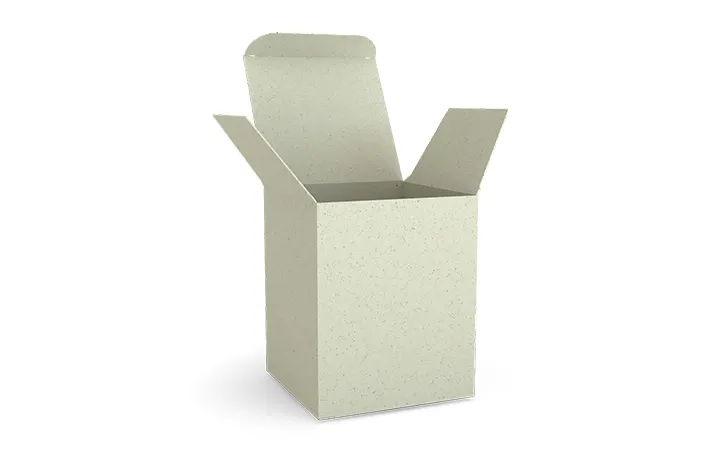
Grass carton
Grass carton is made from dried grass (i.e. hay). The hay is processed and cut into shape. The hay fibres are then added to the usual pulp mixture - the fibres are then very finely visible on the surface of the material.Grass cardboard is biodegradable, minimises the carbon footprint and protects the environment as it is a very rapidly renewable material. This type of cardboard is often used in the cosmetics and food sectors, for example, and there are even some books made from grass paper.
Recycled cardboard & plastic
This type of cardboard is produced by recycling used cardboard. This conserves resources and still produces high-quality, robust cardboard boxes. The cartons can be printed in exactly the same way as conventional cartons and offer exactly the same design options. After use, they can then be returned to the recycling cycle. In addition to cardboard, some plastics can also be recycled. Plastics such as polyethylene (PE), polypropylene (PP), polystyrene (PS) and PMMA (Plexiglas) can be disposed of properly by consumers so that no new plastic has to be produced. To be sure that the packaging can be recycled, it is important to check the recycling code, if available.
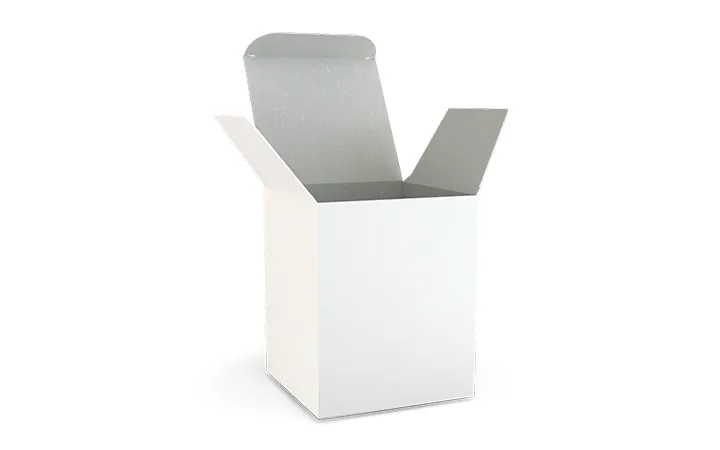
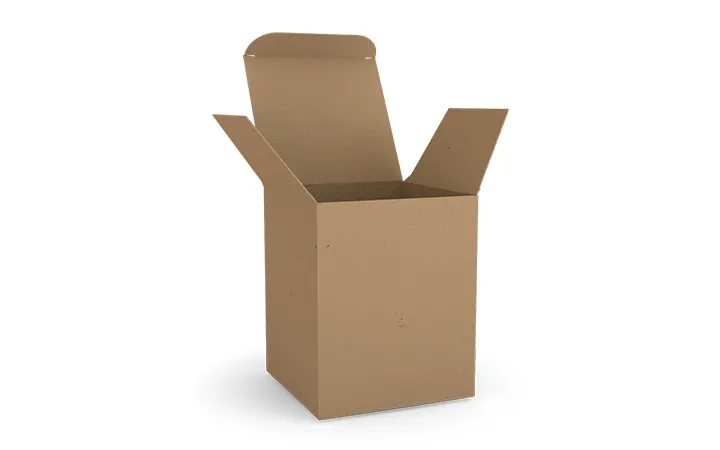
Natural carton
Natural cardboard or kraft cardboard has a natural appearance and is a brown solid cardboard. The cardboard is somewhat reminiscent of corrugated cardboard, but it does not have any corrugated webs, which means that material can be saved. It is stable thanks to its fibre density and is sufficiently suitable for typical folding boxes and product packaging. Natural cardboard is rather plain, uncoated, unbleached and impresses with its special feel. The recycled content of natural cardboard is therefore 80%, and it is also 100% recyclable and even biodegradable.
Summary
To summarise, it can be said that packaging is an important part of our everyday lives. Among other things, it is beneficial to familiarise yourself with the various terms used in the packaging sector - especially with regard to proper handling and disposal.





